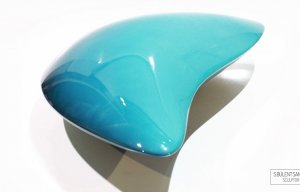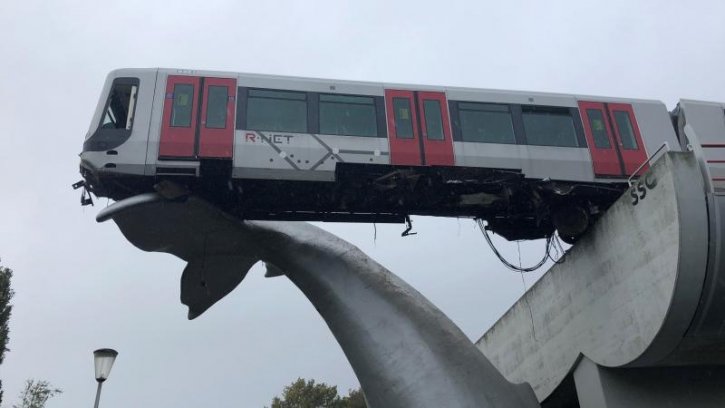
Metyx brings artistic flair to composites
Dutch composites designer Solico, said it was humbled and proud to have engineered the sculpture which caught the runaway train, preventing a total catastrophe.

5th November 2020
Innovation in Textiles
|
Rotterdam, The Netherlands
A runaway train, which burst through the buffers at the end of a Dutch metro line in Spijkenisse, Rotterdam, was literally stopped in its tracks by a giant whale tail, closely averting disaster. Instead of plummeting on to a cycle path 12 metres below De Akkers station, the train came to rest on one of two tails, which make up the City’s modernist composites-based Whale Tails sculpture.
The driver was the only person on the metro and was uninjured in the accident. Dutch composites designer Solico, said it was humbled and proud to have engineered the sculpture which caught the runaway train, preventing a total catastrophe.
In 2001, Solico was commissioned by the Municipality of Rotterdam to provide structural engineering for two composite whale tails reaching twelve and fourteen metres high respectively. Rotterdam experiences a lot of strong winds, which has resulted in vibration issues with other nearby projects. To avoid having these same issues in the whale tails, their shapes were tested in a wind tunnel. The results were used by Solico to design strong and stiff composite whale tails. This was done by extensive FEA analyses. Maropol built and installed the two giant tails.
The whale tails consist of two parts, which are referred to as the ‘body’ and the ‘tail’. The body has a steel lattice interior structure, cladded with 6 mm glassfibre reinforced polyester. The tail, on which the metro train rested, doesn’t include a steel support, and the load is taken by the composite material alone. A lightning conductor is integrated in the tail.
Peter Globevnik, the head structural engineer behind the tails at Solico, commented: “The shape of the fluke on the whale tail makes a perfect wing. We knew that this could get a lot of lift force with the wind which presented us an engineering challenge.” Fortunately, the stiff and strong structure of the tail was able to catch the metro.

Business intelligence for the fibre, textiles and apparel industries: technologies, innovations, markets, investments, trade policy, sourcing, strategy...
Find out more